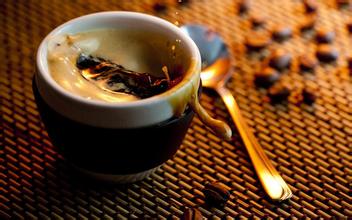Coffee knowledge the growth trainee of coffee trees
Coffee trees belong to the evergreen family of Akanaceae. They are tropical plants that are not cold. Most of them are planted in areas with elevations of 300,400m, and also in highlands with elevations of 2000-2500 meters. But those who plant on slopes above 1500 meters above sea level have better quality. Coffee trees are most suitable for growing in an environment where the average temperature is about 20 degrees Celsius, annual precipitation is 1500-2000 mm, soil permeability is strong, and sunshine is suitable. Coffee is afraid of Frosts Descent and the cold winter, and must not be planted in the highlands where frost falls. Generally speaking, wild coffee trees can grow to about 8 meters. They are planted at home. In order to protect the quality of coffee beans, facilitate management and harvest, the height is cut to 2 meters. Coffee beans begin to bear fruit 3-5 years after sowing, and 5-20 years is the harvest period. A coffee tree can produce about 3-5 kilograms of coffee cherries per year.
There are three types of coffee:
At present, there are three kinds of coffee: Arabica, Robusta and Liberika.
Arabica species:
Produced in Elaraby Sinia (now Ethiopia), the quality is the top of the three tree species, accounting for 2/3 of the world's coffee production, coffee beans oval flat, planted in the highlands. It has strong fragrance and good quality.
Robusta species:
Produced in Congo, Africa, strong disease resistance, high temperature resistance, slightly smaller fruit, accounting for 30% of the world's output, bitter but not sour, the flavor is not very good, most are used to make mixed coffee
Libby card species:
Liberia, which is native to Africa, has a later cultivation history than Arabica. It is characterized by light fragrance and strong bitter taste, and its quality and output are poor.
Structure of coffee cherries and classification of coffee beans:
Coffee beans are fresh and green raw beans obtained by removing their red flesh, peel and silver skin from coffee cherries. The structure of coffee cherry is exocarp, pulp, endocarp, silver peel and seed from outside to inside. Coffee cherries are oval in shape.
Coffee beans can be divided into round beans and flat beans, round beans refer to a coffee cherry, usually have two coffee beans, but some have only one because of incomplete embryonic development, that is, round beans, which are oval in shape. Flat bean refers to a coffee cherry, usually the fruit of coffee is composed of two oval seeds, because its joint is flat, it is called flat bean.
The rest of the coffee:
Coffee flowers are white in color, fragrant jasmine, withered in about 3-4 days, and 6 petals (5 male and 1 female, split into two at the front end). The cotyledon tip of coffee is pointed, the two pieces are relatively grouped, the leaf surface is dark green, the back is light green, oval.
The higher the growth height of coffee beans, the higher the acidity, and the price of coffee beans is higher than that of coffee with proper sour taste, such as Blue Mountain Coffee, which is naturally balanced in sour, sweet and bitter taste and full of flavor, so the natural price is not cheap.
Coffee has four flavors and one fragrance: fragrance, bitterness, sour, mellow and fragrance. Aroma is the life of coffee and the best expression of coffee production process and roasting technology.
The ingredients of coffee:
The main ingredients in coffee are caffeine, tannin, fatty acids, protein, sugar, moisture and other minerals. The proportion of each ingredient is not the same for all kinds of coffee. It varies with different types, production, storage and baking methods.

Important Notice :
前街咖啡 FrontStreet Coffee has moved to new addredd:
FrontStreet Coffee Address: 315,Donghua East Road,GuangZhou
Tel:020 38364473
- Prev

Professional coffee shop ordering method and professional coffee service Italian espresso with beans
1. Do not order take-out espresso first of all, the paper cups are usually very large, which will make espresso or macchiato cool quickly, and the coffee will have a strong paper flavor. Baristas at Intelligentsia Cafe encourage people to drink espresso from ceramic cups and remind guests not to use paper cups. It's best not to let the barista think
- Next

The planting and cultivation of Coffee Tree Seedling which country has the best coffee planting area?
Coffee fruit contains two seeds, namely coffee beans. The two beans are connected face to face with each other on one side of the plane. Each coffee bean has a thin outer film, which is called silver skin, and its outer layer is covered with a yellow outer skin, called endocarp. The whole coffee bean is wrapped in a sticky pulp to form coffee pulp, which is soft and sweet.
Related
- Beginners will see the "Coffee pull flower" guide!
- What is the difference between ice blog purified milk and ordinary milk coffee?
- Why is the Philippines the largest producer of crops in Liberia?
- For coffee extraction, should the fine powder be retained?
- How does extracted espresso fill pressed powder? How much strength does it take to press the powder?
- How to make jasmine cold extract coffee? Is the jasmine + latte good?
- Will this little toy really make the coffee taste better? How does Lily Drip affect coffee extraction?
- Will the action of slapping the filter cup also affect coffee extraction?
- What's the difference between powder-to-water ratio and powder-to-liquid ratio?
- What is the Ethiopian local species? What does it have to do with Heirloom native species?

